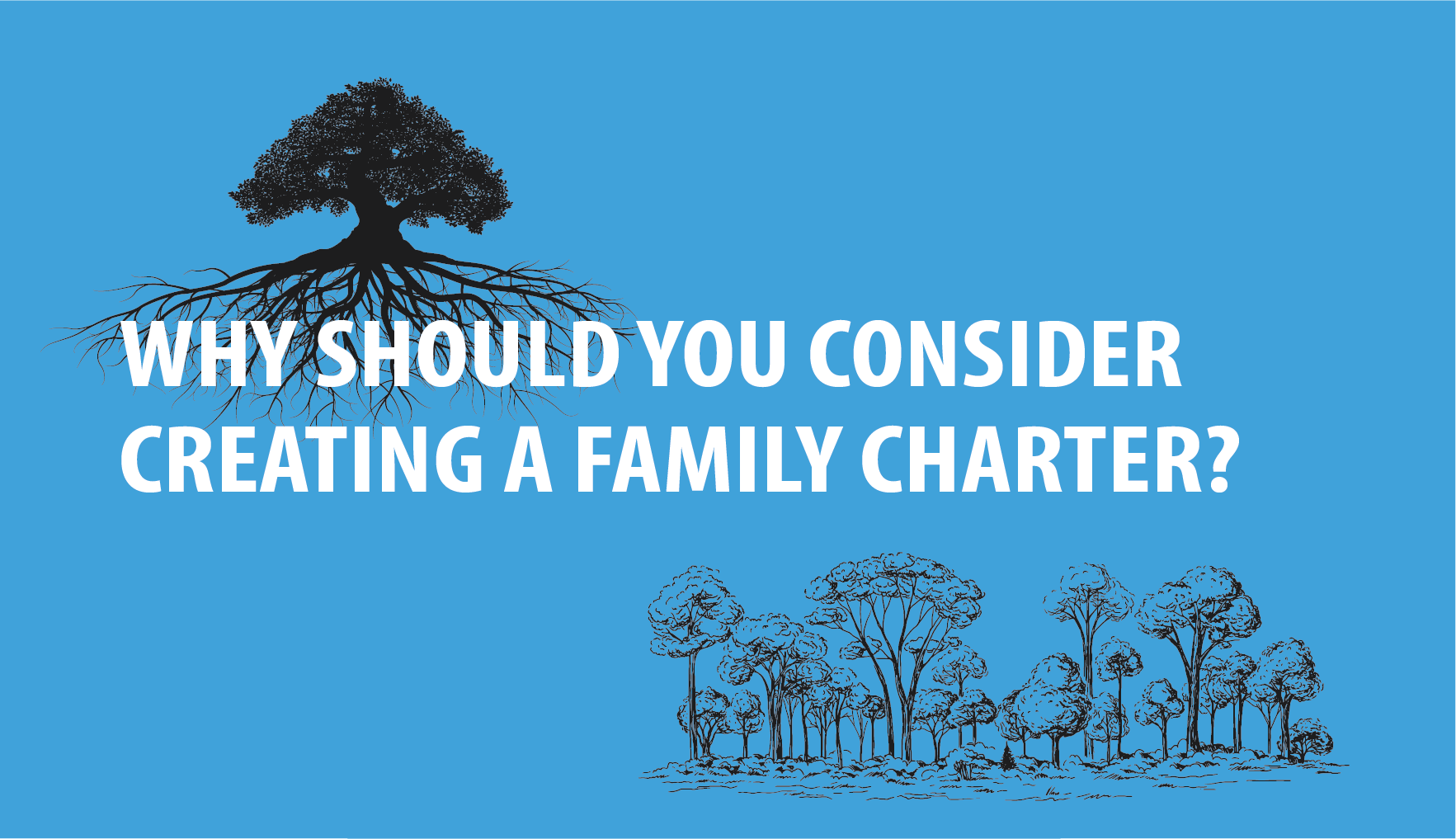Why should you consider creating a Family Charter?

A charter is a family constitution, both tangible and intangible benefits are realized by families that draft a charter. A smooth process for leadership succession can be helped by a well drafted charter. Failing to establish and codify a formal plan for succession may produce disastrous consequences for a family business. Research Boston Consulting Group a large management consulting company has found a 14-percentage-point differential in revenue growth over two years when comparing family businesses that had planned transitions with those that had none. (See “ Succeeding with Succession Planning in Family Businesses ,” BCG article, March 2015.) Careful planning, including a transition plan, contribute significantly to business growth.
Family leaders can use a charter to build strong legacies and strengthen relationships that can last for generations. There are countless examples of family businesses that maintain their legacy through charter provisions that promote unity and affiliation.
The day-to-day stress of operating a business in our complex world is increased when you add transition such a as business succession or significant strategic investment: strength of the family bond mitigates that stress and provides guidance, especially in the communication lines, that is needed to make tough decisions effectively.
A charter should provide clear guidance that can help relieve the stress that may accompany the rise of a new generation particularly when that event significantly increases the number of family members in the business, which often occurs by the third or fourth generation, should a business survive that long.
It is critical that a family charter be drafted well. The provisions, for example, should be specific enough to guide decision making when critical issues, such as leadership succession arise or to define how a family member joins or leaves the company. Avoid legal jargon, it is hard to interpret and fails to offer practical guidelines for family members’ behavior.
There are four broad topics in comprehensive family charters.
Definitions.
Defining who is in the family is a core topic in a family charter, by defining who is in the family and by extension, who is not helps decide who attends family meetings, possibly executive involvement in the family business and the role of extended family members.
The owners of a family business and their children are usually considered family members for the purpose of the company. However, when the younger generation then has children determining membership in the family may not be as simple. Family members must agree on who qualifies as family members and their descendants with rights and responsibilities in the business and associated activities. The agreed-upon definition should be set out in the family charter. The definition should specifically address the status of current spouses, divorced, or widowed spouses, and adopted or extramarital children taking into consideration applicable laws.
Values.
The strength of the family bond will come from acknowledging the values upon which the business was founded in the family charter. For example, expressing support for specific interests, such as environment and health. Values can describe activities that are not acceptable and define a code of conduct. Guidance on the need and type of community service can also be included.
Governance.
Many families have a family council, this council typically communicates with the business board of directors or board of advisors and through them to the business management. The family charter should outline the approach to governance of these boards and of the family council and (if any) the family foundation The outline should include any supplementary committees for the family business or philanthropic activities, documenting the roles and reasons to be of the groups.
Documenting the Relationship of Management and Businesses Ownership.
A family member can be in management but not be an owner, they can be owners but not necessarily in management or they may be in the family but not involved in the business. A family charter should specify the roles and obligations of each position and how does one enter or exit the role they are in. For example, does a second generation family member have to work outside the business for a period of time before entering the business? The charter can establish performance evaluation standards and systems to ensure that family members employed in the business receive honest and constructive feedback. It should also define how salaries and bonuses are determined.
Clear documentation of the background and education required to join the business and progress in seniority ease disputes over succession or other major transitions that could be destructive to both the family and the business. To maintain control of ownership and investment decisions, families can apply both restrictions and incentives. For example, they can restrict the sale of shares to outside investors, by giving other family members a right of first refusal. They can encourage family members to keep their shares by, instituting a generous dividend policy or providing loans to finance assets outside the business including homes and vacation properties.
The value of a family charter
A family charter creates an agreement between the family members and the family and company about how they want to work together. The charter also serves as a reminder of why the family created the company in the first place. The contract helps ensure that the family remains committed to the values upon which the company was founded. Finally, a family charter provides the rules for the family to clearly communicate expectations and boundaries within the family.


 At Copper Beech Company, we believe that planning for the future helps create the future you want. We help clients identify goals and we care about the results our clients achieve. Whether the goals are improving financial position, growing the business, transitioning management and ownership. Helping Clarify goals, plan the route and holding the client accountable for achieving the milestones along the way is how we bring value to the engagement.
At Copper Beech Company, we believe that planning for the future helps create the future you want. We help clients identify goals and we care about the results our clients achieve. Whether the goals are improving financial position, growing the business, transitioning management and ownership. Helping Clarify goals, plan the route and holding the client accountable for achieving the milestones along the way is how we bring value to the engagement.